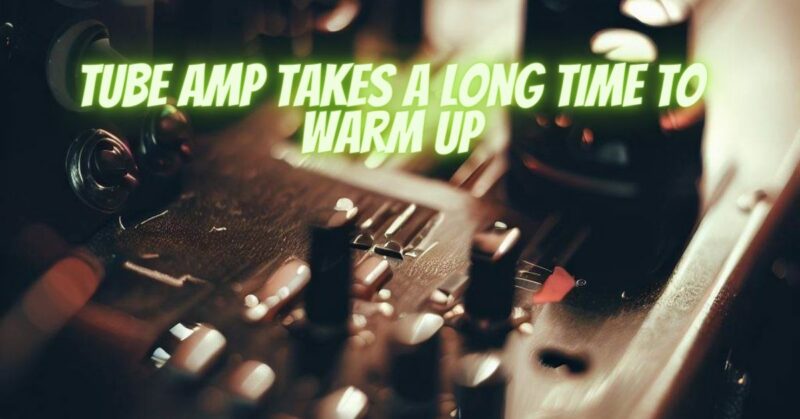Tube amplifiers, also known as valve amplifiers, require a warm-up period before they reach their optimal operating condition. However, if your tube amp takes an unusually long time to warm up, it can be frustrating and may indicate an underlying issue. In this article, we will explore some common causes for a prolonged warm-up time and provide potential solutions to help you address and resolve the problem.
- Aging Tubes: As vacuum tubes age, their performance can degrade, resulting in longer warm-up times. Over time, the cathode emission can decrease, affecting the tube’s ability to reach its operating temperature quickly. If your tubes are old or worn, consider replacing them with new ones to improve warm-up time and overall performance.
- Cold Cathode Biasing: Some tube amplifiers employ a cold cathode biasing system, which can contribute to longer warm-up times. Cold cathode biasing allows the tubes to operate in a cooler temperature range, extending tube life and reducing heat output. However, this approach can result in a longer warm-up period. If your amplifier uses cold cathode biasing, it is normal for it to take more time to reach optimal operating conditions.
- Faulty Components: Faulty components within the amplifier circuitry can cause extended warm-up times. Check for any damaged or worn-out capacitors, resistors, or other critical components. If you suspect a faulty component, it is recommended to have your amplifier inspected and serviced by a qualified technician.
- Power Supply Issues: Insufficient or unstable power supply can affect the warm-up time of your tube amp. Verify that the power supply is providing consistent and adequate voltage to the amplifier. Fluctuations or low voltage can result in prolonged warm-up periods. Consider using a voltage regulator or surge protector to ensure a stable power supply.
- Ambient Temperature: The ambient temperature in the room where the amplifier is located can influence warm-up times. Cold environments require more time for the tubes to reach their operating temperature. Ensure that your amplifier is placed in a room with a moderate and stable temperature for optimal performance.
- Tube Biasing: Improper tube biasing can contribute to longer warm-up times. Tube biasing is the process of setting the correct operating voltage for the tubes. Incorrect biasing can lead to suboptimal performance and extended warm-up periods. If you are not experienced with biasing, it is advisable to consult a professional technician to ensure proper tube biasing.
Conclusion:
If your tube amplifier takes a long time to warm up, it can be caused by aging tubes, cold cathode biasing, faulty components, power supply issues, ambient temperature, or improper tube biasing. By addressing these potential causes, you can improve warm-up time and optimize the performance of your tube amp. Consider replacing aging tubes, understand the implications of cold cathode biasing, check for faulty components, ensure a stable power supply, maintain a moderate ambient temperature, and ensure proper tube biasing. If the issue persists or you are unsure how to proceed, consult a qualified technician or an experienced tube amp specialist for further assistance and guidance.

